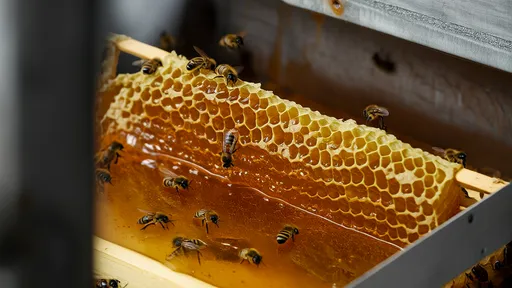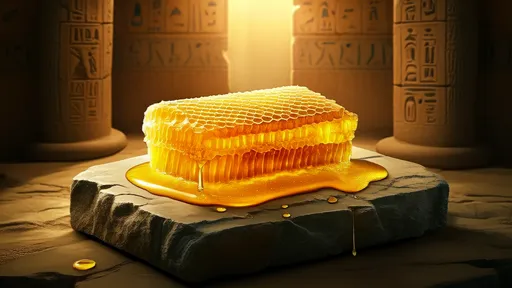In the bustling world of honeybee colonies, efficiency isn't just a preference—it's a matter of survival. One of nature's most fascinating examples of architectural optimization can be found in the hexagonal honeycomb structures that bees construct to store their precious honey. These geometric marvels have puzzled and inspired mathematicians, engineers, and biologists for centuries, revealing profound truths about material efficiency and space management in the natural world.
The honeycomb's hexagonal pattern isn't an arbitrary choice; it's the result of millions of years of evolutionary refinement. Bees must conserve every ounce of wax they produce—a resource that requires significant energy to create. Through this evolutionary lens, the hexagon emerges as the undisputed champion of storage solutions. Unlike circles, which leave wasted gaps between cells, or squares and triangles, which require more wall material for the same storage capacity, hexagons provide the perfect balance between strength and material economy.
Charles Darwin himself marveled at the honeybee's architectural prowess, describing the comb as "absolutely perfect in economizing labor and wax." Modern science has confirmed his intuition—the hexagonal grid uses approximately 2% less wax than a square grid would for the same storage volume. When multiplied across thousands of cells in a typical hive, this small percentage translates to enormous energy savings for the colony. The walls of each cell serve double duty as walls for adjacent cells, creating a remarkably efficient use of materials.
What makes this natural engineering even more remarkable is how bees achieve such precision without blueprints or central coordination. Each worker bee contributes to the comb's construction following simple instinctual rules, yet the collective result is a masterpiece of geometric perfection. Recent studies suggest that the hexagonal shape emerges naturally from the physical properties of wax and the way bees manipulate it with their bodies and body heat. As wax softens, surface tension pulls the material into the most energy-efficient configuration—the hexagon.
The implications of this biological design extend far beyond apiaries. Human engineers have borrowed from the honeybee's playbook when designing everything from aircraft panels to earthquake-resistant structures. The hexagonal pattern provides exceptional strength-to-weight ratios, making it ideal for applications where material conservation is crucial. Even in nanotechnology, researchers are developing honeycomb-inspired materials for advanced filtration systems and lightweight composites.
Beyond its mechanical advantages, the honeycomb structure demonstrates nature's ability to solve complex problems through simple, elegant solutions. While human engineers might approach a storage optimization problem with advanced mathematics and computer modeling, bees arrive at the same solution through evolutionary trial and error. The hexagonal honeycomb stands as a testament to the power of natural selection—where countless generations of slight improvements yield designs that continue to astonish and inform human innovation.
As we face global challenges in sustainable design and resource management, the humble honeybee offers profound lessons. Its wax-saving strategy developed over eons provides a blueprint for human efficiency in an era of material scarcity. The next time you see a honeycomb, consider that you're looking at one of nature's most sophisticated factories—where every angle has been optimized, every gram of wax accounted for, and every cell serves the greater good of the hive.

By /Jul 7, 2025

By /Jul 7, 2025

By /Jul 7, 2025

By /Jul 7, 2025

By /Jul 7, 2025

By /Jul 7, 2025

By /Jul 7, 2025

By /Jul 7, 2025

By /Jul 7, 2025

By /Jul 7, 2025

By /Jul 7, 2025

By /Jul 7, 2025

By /Jul 7, 2025

By /Jul 7, 2025

By /Jul 7, 2025

By /Jul 7, 2025

By /Jul 7, 2025

By /Jul 7, 2025